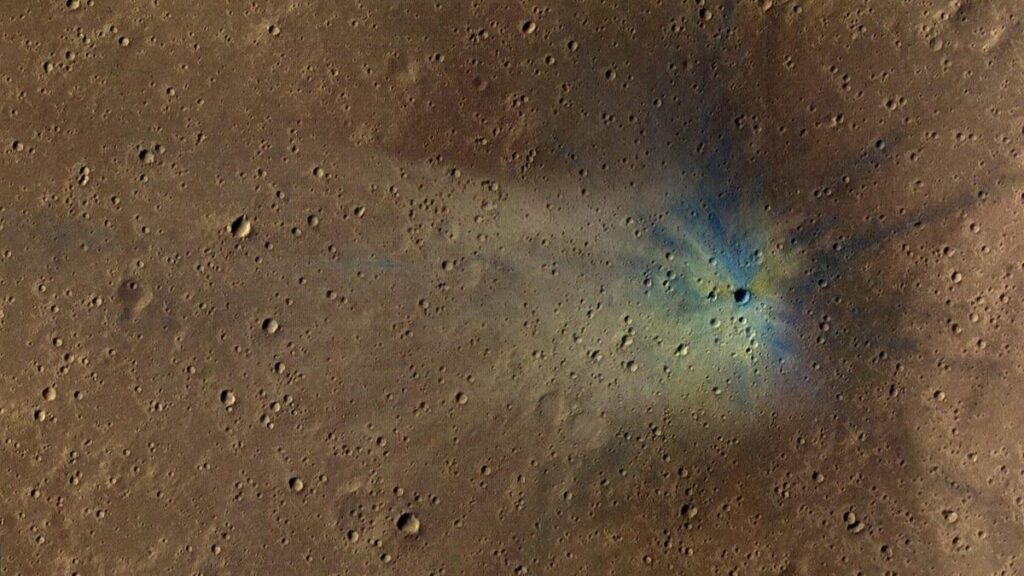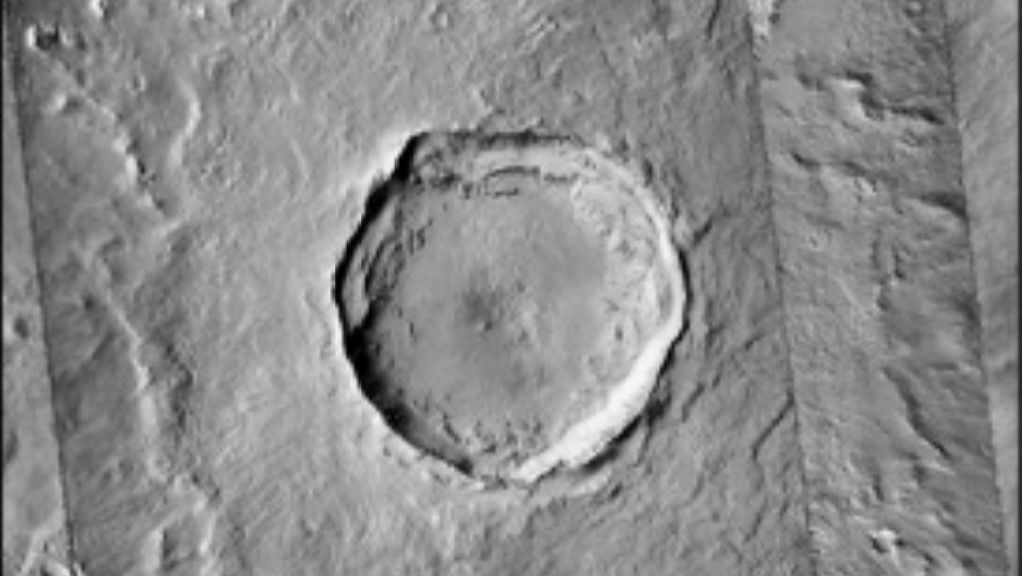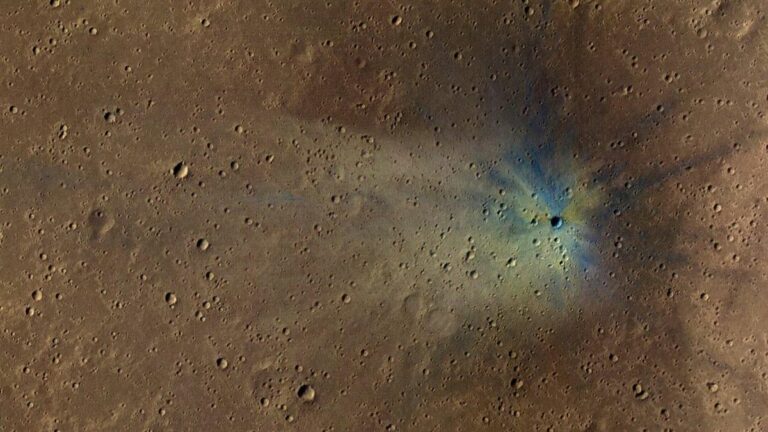Scientists have made a remarkable discovery on Mars, uncovering evidence of a solitary colossal object
Around 2.3 million years ago, a celestial body collided with Mars, resulting in the formation of approximately 2 billion smaller craters surrounding the primary Corinto impact crater. This event occurred near the equator of the Red Planet.

According to a recent study presented at the 55th annual Lunar and Planetary Science Conference, Mars experienced a significant impact approximately 2.3 million years ago. This impact, caused by a massive object, not only left a prominent crater called Corinto, measuring about 8.7 miles (14 kilometers) in diameter, but also resulted in the formation of 2 billion smaller craters on the planet’s surface. Corinto is situated in Elysium Planitia, a wide plain that spans Mars’ equator. The researchers noted that such colossal impacts occur on Mars only once every 3 million years, making Corinto potentially the most recent large crater on the Red Planet. The study describes Corinto as a newly formed impact crater in Elysium Planitia, responsible for creating an extensive network of secondary craters on Mars.
The examination of Corinto and its surroundings was conducted by the team using data obtained from the High Resolution Imaging Experiment (HiRISE) and the Context Camera (CTX) on the Mars Reconnaissance Orbiter (MRO). According to the study, the object that created Corinto caused the surrounding landscape to be marked with smaller craters. These craters were formed as fragments of the Martian surface were ejected outward in ray-like patterns, which can still be observed today. The secondary craters are primarily concentrated in the southern and southwestern regions of Corinto, with the farthest fragments landing approximately 1,150 miles (1,850 km) away from the main crater. The researchers categorized these secondary craters into four distinct groups, known as “facies,” based on their shape and distance from the main crater. The craters in Facies 0, which are closest to Corinto, have a semicircular appearance, while the craters in Facies 3, located farthest away, are long and narrow in shape.

The differences observed in the study, as distance from the crater increases, are likely due to variations in impact velocity and size of ejecta. The flight direction of the ejecta fragments, which exploded outward during the impact, combined with the slightly elliptical shape of the main crater, indicate that the object came from the north and landed on Mars at an oblique angle of 30 to 45 degrees. The researchers also propose that the object was composed of “strong, competent basalt.”
The interior floor of Corinto, located 0.6 mile (1 km) below the surrounding Martian terrain, contains numerous pits that imply the presence of water ice when the impact occurred. These pits, all smaller than 660 feet (200 meters) in diameter, may have been created by intense degassing as the water ice was superheated upon impact, the researchers suggested.
This study has not yet been published in a peer-reviewed journal.
Do not forget to share your opinion with us to provide you with the best posts !




0 Comments